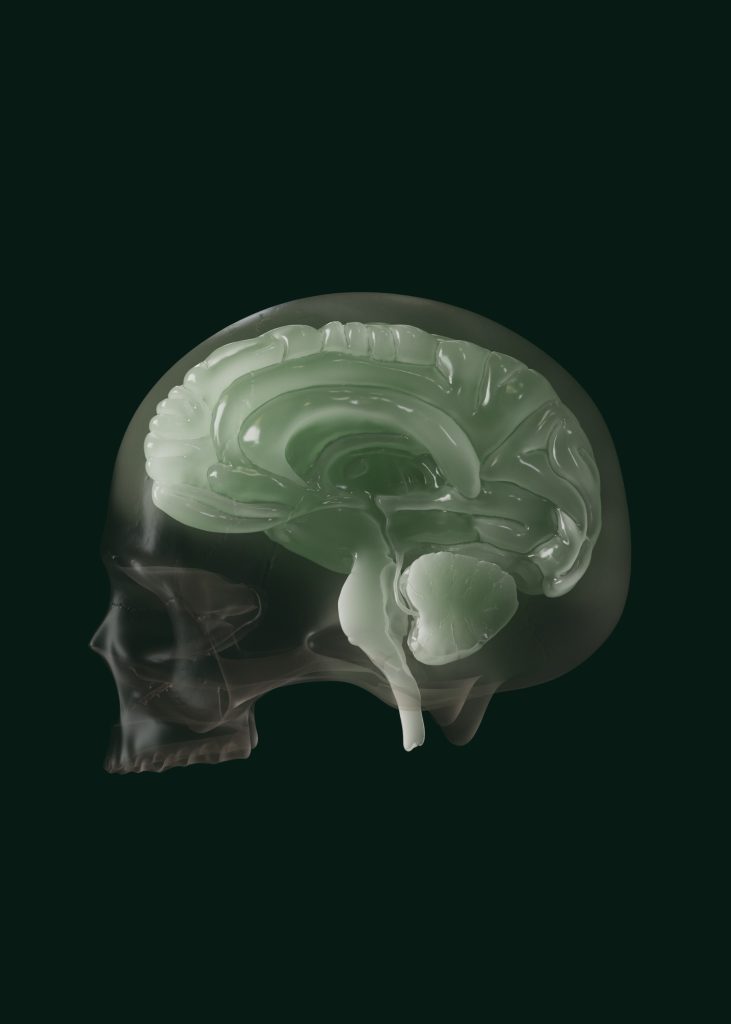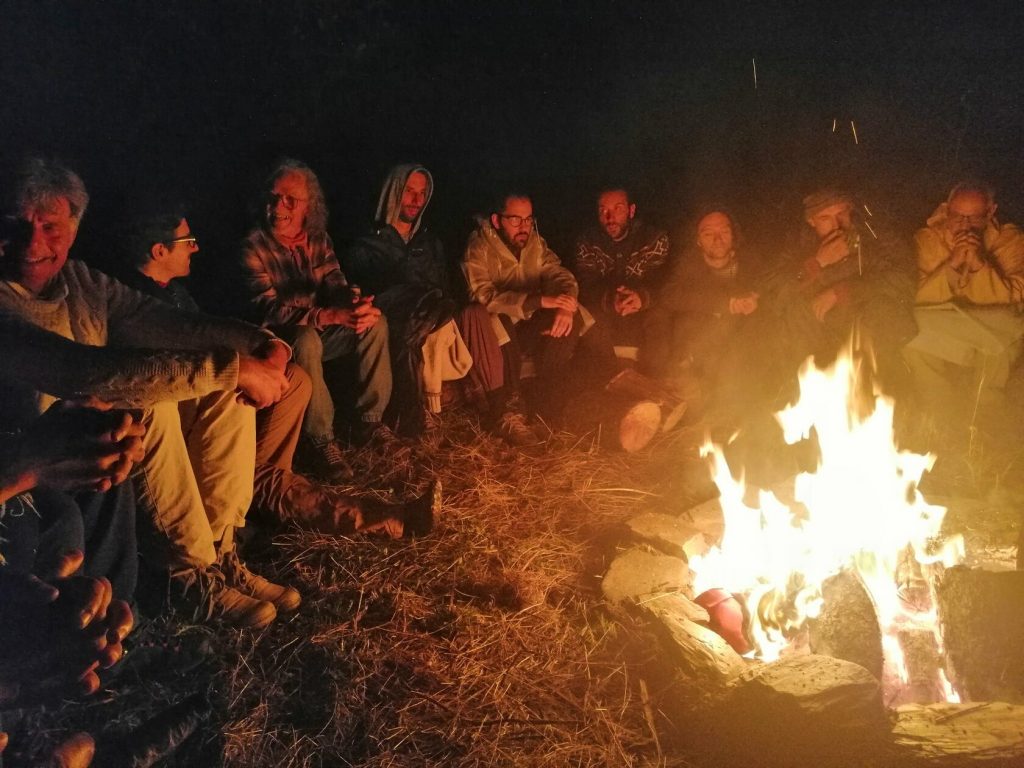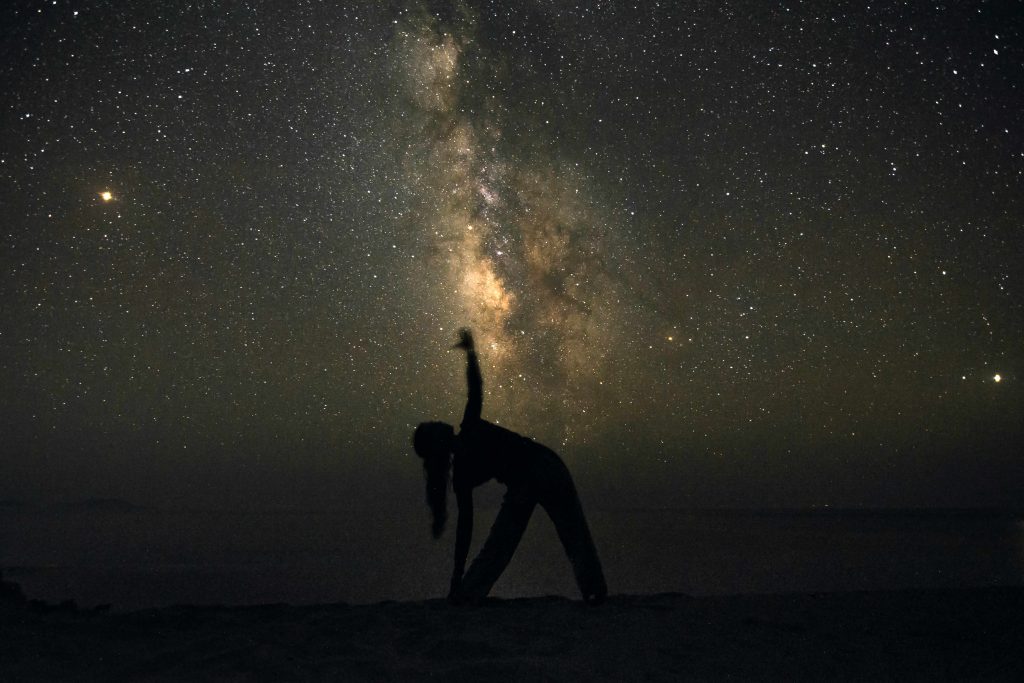Reconnecting Our Children to Nature
We’ve been told a story that we are selfish, aggressive, and rugged individuals. But if that were true, we should have no problem with physical distancing and self-isolation. The pandemic showed us that this story is not who we are.
That’s because we evolved in cooperative bands of kin and non-kin where we were nurtured and welcomed by all members of the community. We lived together, we gathered food together, we sang together, and we danced together. We knew it would have been impossible to survive on our own. But together, we thrived.
Today, we are living in a culture that goes against everything it means to be human. Our culture emphasizes toughness over tenderness, isolation instead of togetherness, even for babies. As a result, we are depressed, anxious, chronically ill, and at the bottom of every international indicator for health. We are living in a trauma factory.
We are stuck in a cycle of competitive detachment where we feel disconnected from others and even ourselves, while at the same time feeling we have to compete for anything worthwhile. There is a way, not only to break this cycle, but to create a new cycle, one that reclaims our humanity and helps us heal ourselves and our culture. We can create a cycle of connected, cooperative companionship.
For most of our existence, we have created culture from the bottom up, from the way we raised children, and from the top down, from the stories we told one another (Four Arrows & Narvaez, in press). Children were nested in loving supportive village care, growing deep connections to and respect for the natural world. The stories they heard spoke of their relationships to and responsibility for the community and the earth.
In modern culture, children are raised with disconnection, with little concern for their basic needs and with an almost random set of relational experiences. They still hear stories, conveyed by various media, but they are full of put-downs, egoism and violence.
Babies require an external womb experience to grow and connect with others. They need calming affectionate care, immediate responses to keep them optimally aroused while rapidly growing brain connections. Without this early care, without meeting our millions-year-old biological needs for our evolved nest, babies learn a pattern of disconnection from the self, others, and the world, manifesting in self-protective mindsets and irritation with people from different backgrounds or with different ideas. We withdraw from social life because it is just too painful, triggering the traumas we experienced early on in life. We constantly seek to fill a void we were never biologically intended to experience.
The good news is that it is possible to break this cycle of competitive detachment and restore the cycles of connected, cooperative companionship. We can learn what our basic needs are and find ways to help everyone get them met. We can take steps that open our minds and hearts and build empathy towards others who are different from us. We can become aware and careful about where we put our greatest asset – our attention. We can build attachment to the natural world by immersing ourselves in its beauty and developing our connection with its aliveness.
Cultures can and do change. It begins with each one of us realizing that we are living in a culture that is at odds with our inherent nature to be empathic, flexible, and sovereign beings. We can take steps to heal and restore our core nature of sociality and connectedness.
Many of us assume that the culture we live in mirrors innate human nature. But today’s dominant cultures of competitive destructive detachment are rare and recent. Nearly every other culture that has ever existed during our species history over millions of years has been one of connected cooperative companionship.
Nurturing the wellbeing of community members characterized many First Nation communities over hundreds if not thousands of years. The ancestors of the San Bushmen, extant for over 150,000 years, provided contemporary humanity’s genes. Their longevity demonstrates the importance of aligning with Earth wisdom.
What does aligning with Earth wisdom look like? It means following evolved practices that promote wellbeing and sustainability, common in the traditions of First Nations around the world. Along with deep place-based knowledge, the Indigenous worldview is one of respectful relations with all members of the biocommunity, from plants and animals to waterways and mountains. Robin Wall Kimmerer described the “honorable harvest” principles that traditionally guide Native American communities. They include asking permission before taking the life of a plant or animal and respecting the answer; not taking the first or last; leaving at least half; giving a gift in return for life taken.
To embrace this orientation to kinship relations and not dismiss it out of hand, one must build a deep sense of nature connection or ecological attachment. As poet and activist Wendell Berry noted regarding honoring earth, “it all turns on affection.” To care for the earth, one must feel bonded to it. Many do not. Nature immersion from a young age avoids this ‘nature deficit disorder’ that is now rampant among children and adults in the USA. Ecological attachment can be built with daily practices of attention and immersion, along with cultural stories about our kinship with a sentient living earth.
Fundamental to growing an earth-respecting member of the biocommunity is our species’ evolved nest, a set of practices more than 75 million years old, passed on through our social mammalian line. Neuro- and social sciences are demonstrating the importance of each nest component for child and adult wellbeing. Soothing gestation and birth foster resilient social and emotional intelligence. Breastfeeding for several years stimulates proper jaw and brain development. Positive touch promotes healthy self-regulation. A welcoming social climate supports a sense of belonging and positive growth. Self-directed social play promotes friendship and control of aggression. Alloparents (other responsive caregivers) nurture flexibility and openness. Responsive relationships support healthy social and physical development. Nature embeddedness ensures a sense of placefulness on the earth. Routine healing practices offer ways to maintain harmony and healthy balance in self and relationships, including with the other than human. Societies that provide less of the evolved nest, like the USA, suffer from species-atypical outcomes that compound over generations—high rates of depression, anxiety suicidality, dysregulation and illbeing.
While critical for building humanity’s social brain in early life, nestedness appears to be vital throughout life for maintaining full humanity and an earth-based moral compass, as demonstrated by San Bushmen. To heal ourselves and our world, we simply must return to this way of nurturing children, adults and communities.
References
Bronfenbrenner, U. (1972). Two worlds of childhood. New York: Simon & Schuster.
Eisler, R., & Fry, D.P. (2019). Nurturing our humanity. New York: Oxford University Press.
Four Arrows, & Narvaez, D. (in press). Restoring the kinship worldview: indigenous quotes and reflections for healing our world. Berkeley: North Atlantic Books.
Fry, D. (Ed.) (2013) War, peace and human nature. New York, NY: Oxford University Press.
Fry, D. P. (2006). The human potential for peace: An anthropological challenge to assumptions about war and violence. New York: Oxford University Press.
Fry, D. P., & Souillac, G. (2017). The original partnership societies: Evolved propensities for equality, prosociality, and peace. Interdisciplinary Journal of Partnership Studies, 4 (1), Article 4
Garbarino, J. (1995). Raising children in a socially toxic environment. San Francisco: Jossey Bass.
Gilbert, P. (Ed.) (2017). Compassion: Conceptualisations, Research and Use in Psychotherapy. London: Routledge.
Gowdy, J. (1998). Limited wants, unlimited means: A reader on hunter-gatherer economics and the environment. Washington, D.C.: Island Press.
Hobbes, T. (1651/2010) Leviathan, Revised Edition. In Martinich, A.P. & Battiste, B. (Eds.). Peterborough, ONT: Broadview Press.
Hrdy, S. (2009). Mothers and others: The evolutionary origins of mutual understanding. Cambridge, MA: Belknap Press.
Irons, C., & Beaumont, E. (2017). The compassionate mind workbook. London: Robinson.
Karr-Morse, R., & Wiley, M.S. (1997). Ghosts from the nursery: Tracing the roots of violence. New York: Atlantic Monthly Press.
Karr-Morse, R., & Wiley, M.S. (2012). Scared sick: The role of childhood trauma in adult disease. New York: Basic Books.
Kidner, D. W. (2001). Nature and psyche: Radical environmentalism and the politics of subjectivity. Albany: State University of New York.
Konner, M. (2005). Hunter-gatherer infancy and childhood: The !Kung and others. In B. Hewlett & M. Lamb (Eds.), Hunter-gatherer childhoods: Evolutionary, developmental and cultural perspectives (pp. 19-64). New Brunswick, NJ: Aldine Transaction.
Lee, R. B., & Daly, R. (Eds.). (2005). The Cambridge encyclopedia of hunters and gatherers. New York: Cambridge University Press.
Lanius, R. A., Vermetten, E., & Pain, C. (2010). The impact of early life trauma on health and disease: The hidden epidemic. New York, NY: Cambridge University Press.
Midgley, M. (2010) The solitary self: Darwin and the selfish gene. Durham, UK: Acumen.
Montagu, A. (1971). Touching: The human significance of the skin. New York: Perennial Library.
Murdoch, Iris. 2001. The Sovereignty of Good. London: Routledge Classics.
Narvaez, D. (2013). Development and socialization within an evolutionary context: Growing up to become “A good and useful human being”. In D. Fry (Ed.), War, peace, and human nature: The convergence of evolutionary and cultural views (pp. 643-672). New York: Oxford.
Narvaez, D. (2014). Neurobiology and the development of human morality: Evolution, culture and wisdom. New York: Norton.
Narvaez, D. (Ed.) (2018). Basic needs, wellbeing and morality: Fulfilling human potential. New York: Palgrave-MacMillan.
Narvaez, D., Four Arrows, Halton, E., Collier, B., Enderle, G. (Eds.) (2019). Indigenous Sustainable Wisdom: First Nation Know-how for Global Flourishing. New York: Peter Lang.
Narvaez, D., Panksepp, J., Schore, A., & Gleason, T. (2013). Evolution, early experience and human development: From research to practice and policy. New York: Oxford.
Panksepp, J. (1998). Affective neuroscience: The foundations of human and animal emotions. New York: Oxford University Press.
Prescott, J.W. (1996). The origins of human love and violence. Pre- and Perinatal Psychology Journal, 10(3), 143-188.
Rakel, D. (2018). The compassionate connection: The healing power of empathy and mindful listening. New York: W.W. Norton.
Schore, A.N. (1997). Early organization of the nonlinear right brain and development of a predisposition to psychiatric disorders. Development and Psychopathology, 9, 595-631.
Schore, A.N. (2002). Dysregulation of the right brain: A fundamental mechanism of traumatic attachment and the psychopathogenesis of posttraumatic stress disorder. Australian & New Zealand Journal of Psychiatry, 36, 9-30.
Schore, A.N. (2013). Bowlby’s “Environment of evolutionary adaptedness”: Recent studies on the interpersonal neurobiology of attachment and emotional development. In D. Narvaez, J. Panksepp, A. Schore & T. Gleason (Eds.), Evolution, Early Experience and Human Development: From Research to Practice and Policy (pp. 31-67). New York: Oxford University Press.
Steyer, J.P. (2002). The other parent. New York: Atria Books.
Suttie, I. (1935). The origins of love and hate. New York, NY: The Julian Press.
UNICEF (2007). Child poverty in perspective: An overview of child well-being in rich countries, a comprehensive assessment of the lives and well-being of children and adolescents in the economically advanced nations, Report Card 7. Florence, Italy: United Nations Children’s Fund Innocenti Research Centre.
Wrangham, R. W., & Peterson, D. (1996). Demonic males: Apes and the origins of human violence. Boston, MA: Houghton, Mifflin and Company.
Young, J. (2019). Connection modeling metrics for deep nature-connection, mentoring and culture repair. In D. Narvaez, Four Arrows, E. Halton, B. Collier, G. Enderle (Eds.) (2019). Indigenous Sustainable Wisdom: First Nation Know-how for Global Flourishing (pp. 219-243). New York: Peter Lang.
Young, J., Haas, E., & McGown, E. (2010). Coyote’s guide to connecting with nature, 2nd ed.. Santa Cruz, CA: Owlink Media.






